Three masterpieces from glimmer through struggle to breakthrough.
Save this article to read it later.
Find this story in your accountsSaved for Latersection.
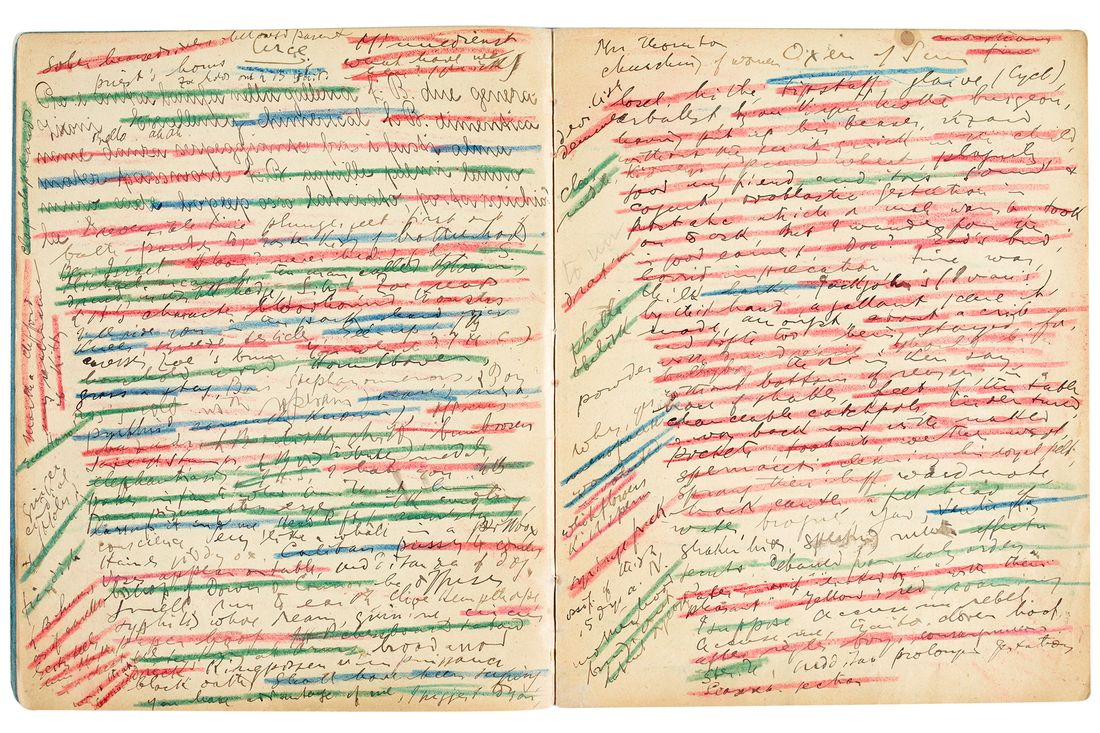
For 40 years, I was an editor, mostly of magazines, including this one.
As an editor and as a reader, I found the story of how creators create irresistible.
I assigned a story on Stephen Sondheim in which he explained how he wrote a single song.
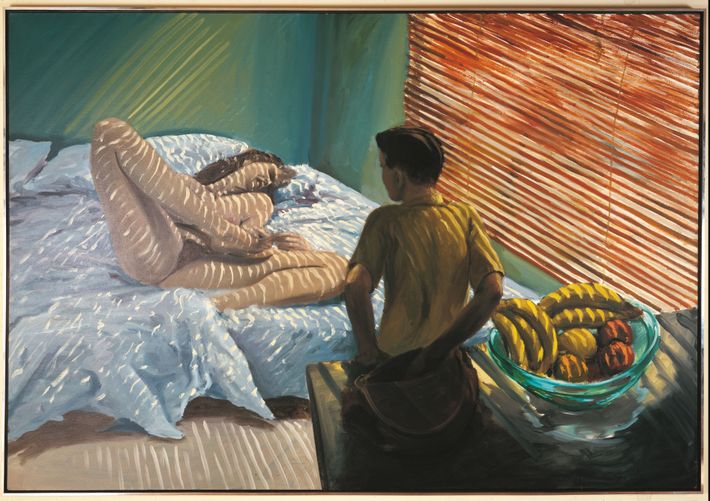
I traced the evolutions of buildings and novels and soap-opera arcs.
Cultural procedurals were especially good material.
When I quit my magazine job, I decided to try my hand as an artist.
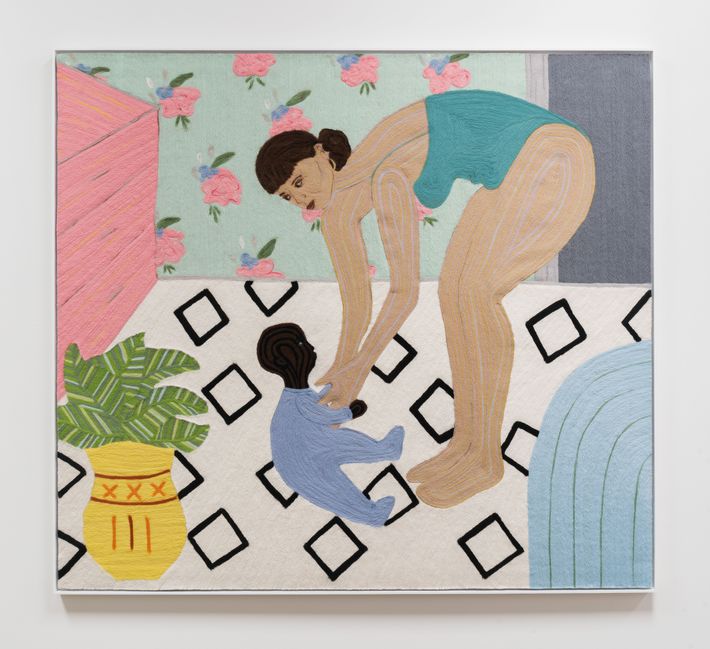
When I left my job, I began to paint more seriously.
That was the beginning of my torment: I just wasnt very good.
Decent paintings sometimes emerged, but they seemed almost by accident.
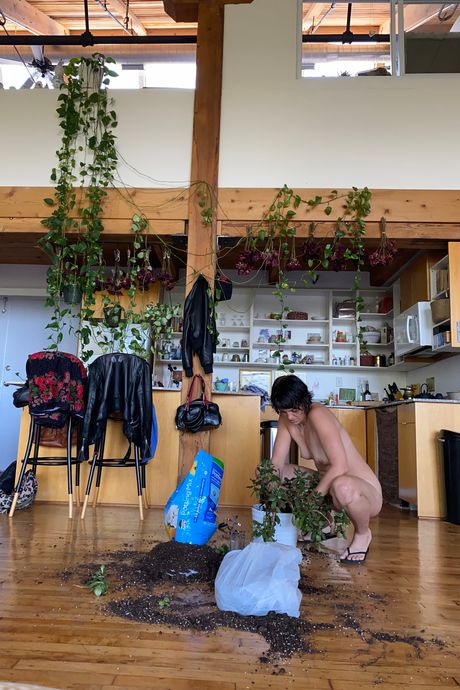
And they were accidents I couldnt necessarily re-create.
I got frustrated easily and gave up easily, never knowing when to persevere or surrender.
Basically, it all seemed impossible.
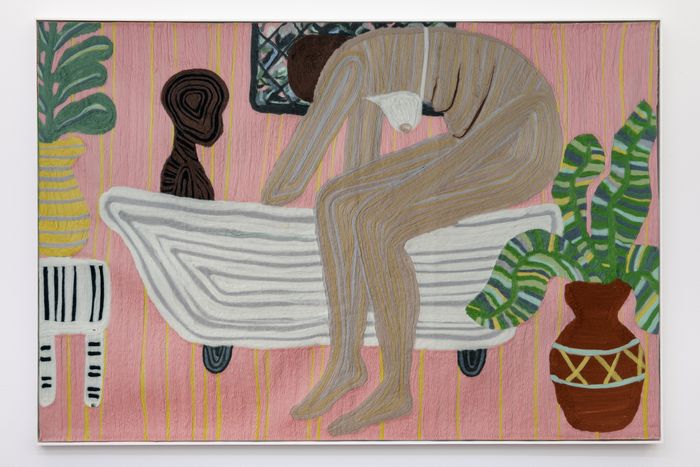
Only now, my professional interest had become personal.
I actually had no idea what I was looking for …
I started out just wanting to paint a bowl of fruit.
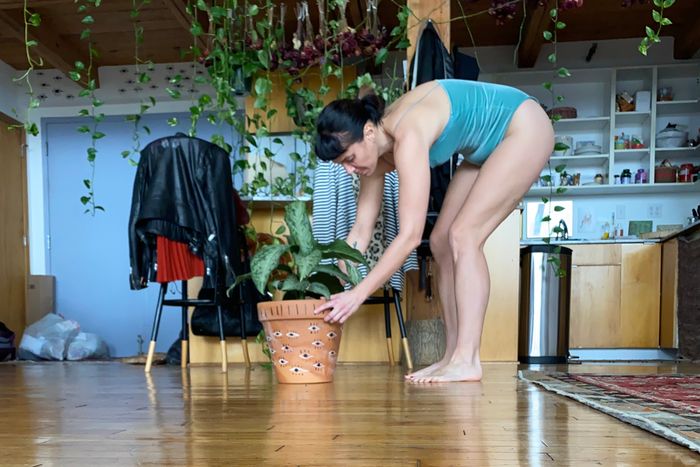
Who I first thought was in the room wasnt there.
People came and went.
He literally grew up in that room …
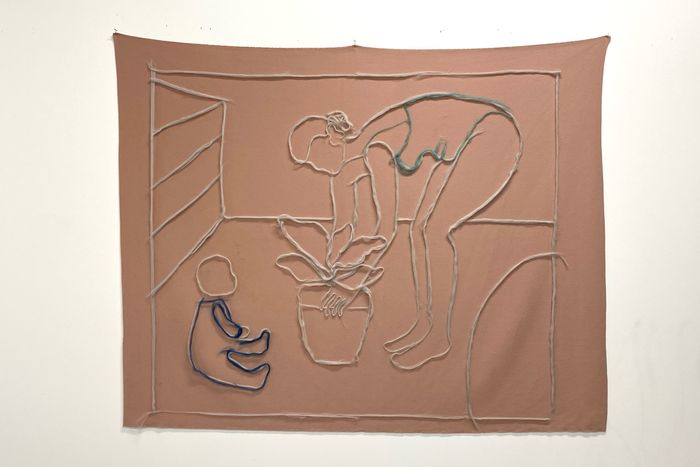
I just kept following it,[trying]things that didnt work …
I just painted things in, and painted things out.
Reading this account, I felt some of my torture starting to lift.
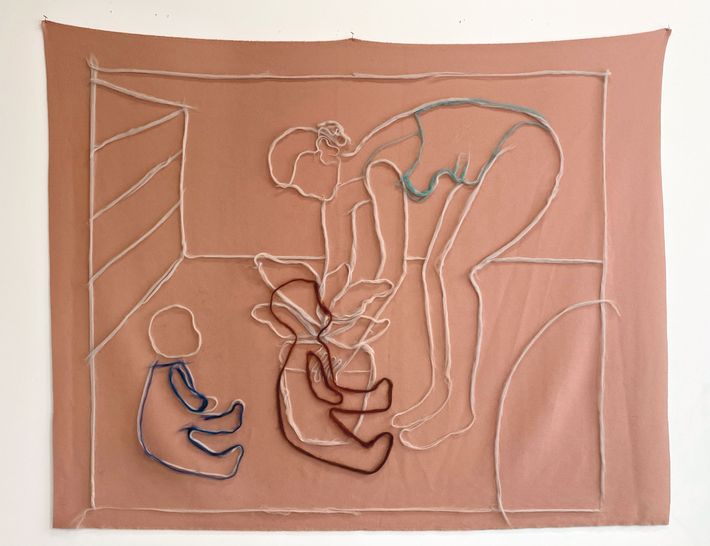
I appreciated Fischls willingness to allow me into his mind as he stumbled through the work.
His struggle was comforting and illuminating.
It gave me the beginnings of an idea.

When artists speak, they generally focus on what their work means.
And more crucially: What do they do when they lose faith?
Do they lose faith?
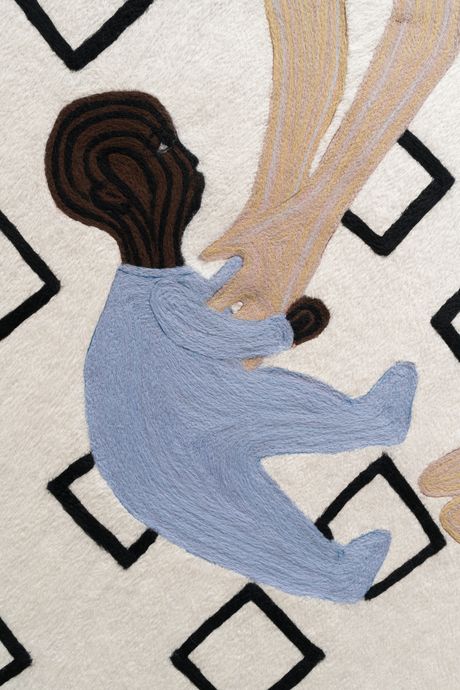
In other words, how do artists think?
As I considered my flailing artistic efforts, I realized I was begging for entrance into the artists head.
So no meaning, nomagic,just the work of it: the work of art.
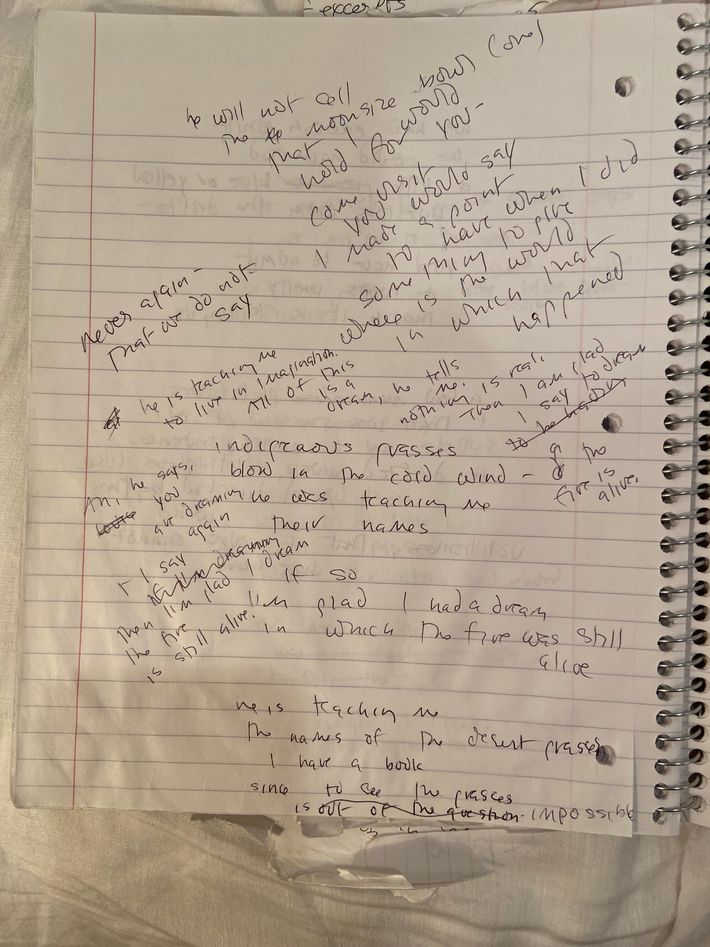
The outcome devastated her.
Realizing she was suddenly doing a lot of planting.
I took this picture a few days after the third miscarriage, she said.
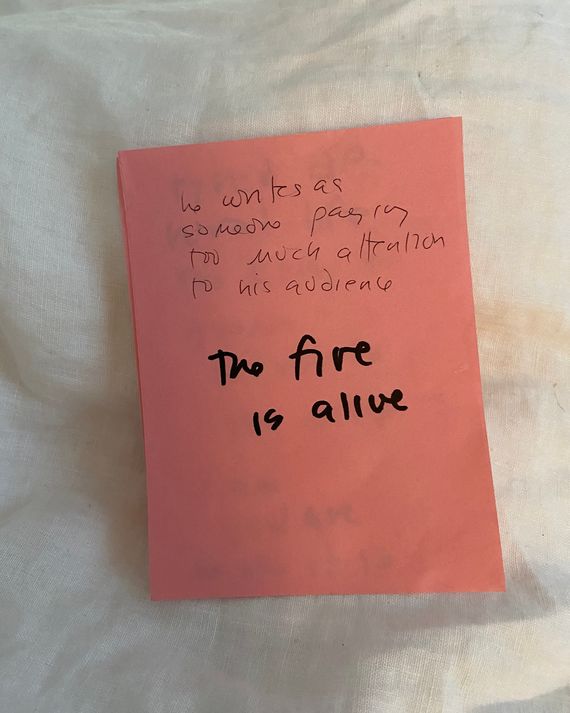
Im in a really messed-up space here.
Like,Yes, I lost these babies, but I can grow things.I was repotting everything.
She took the pictures because she thought that the planting might betelling me something.
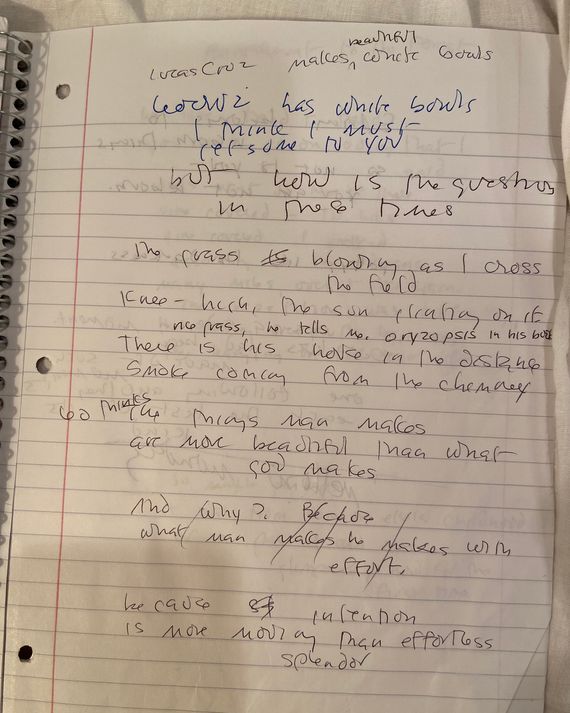
Imagining what shed lost.
This was the first one I did, maybe three days after the miscarriage.
Id had an image Id been working on when I was pregnant of me sitting on the bath.
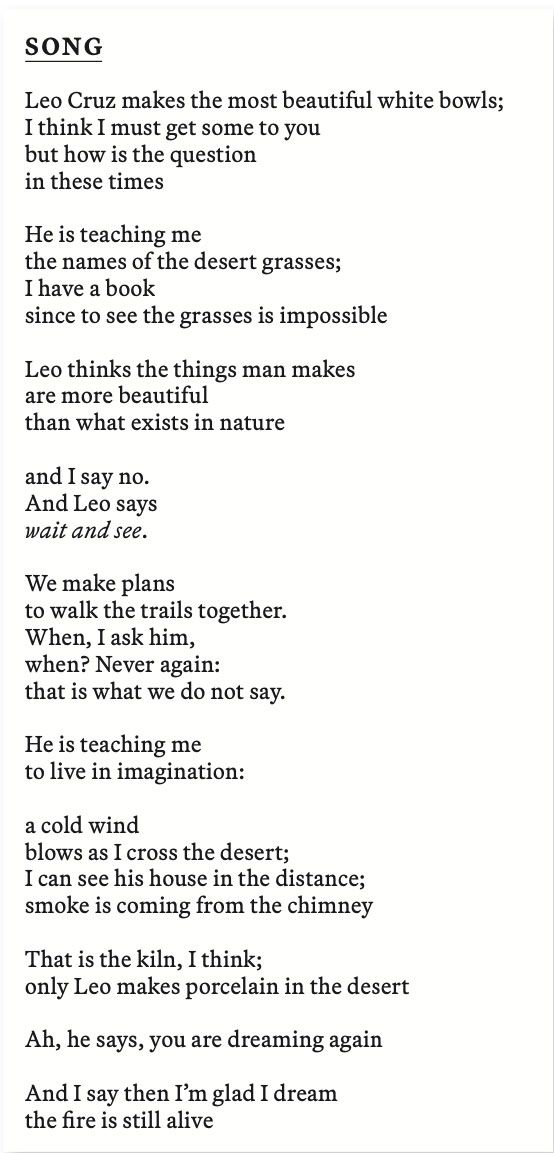
My partner had been very against me drawing any images with the child until I had the child.
What I wanted to happen, what I imagined would happen, what didnt happen.
Getting the image right.
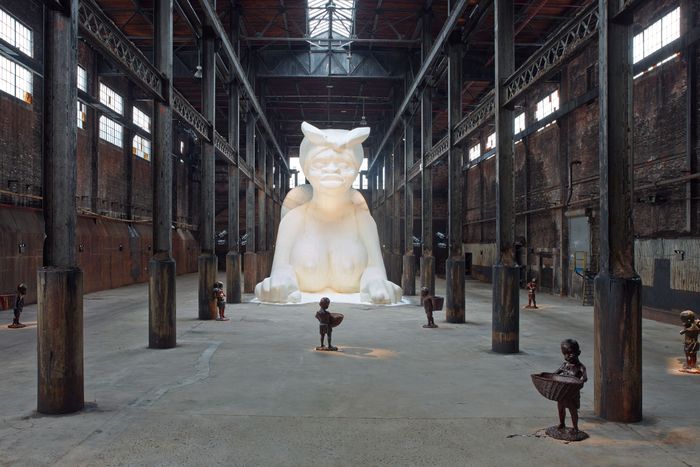
So I re-created the scene and took several pictures of it.
What I liked about this version was this shape with her leaning down.
Im starting to make an oval.
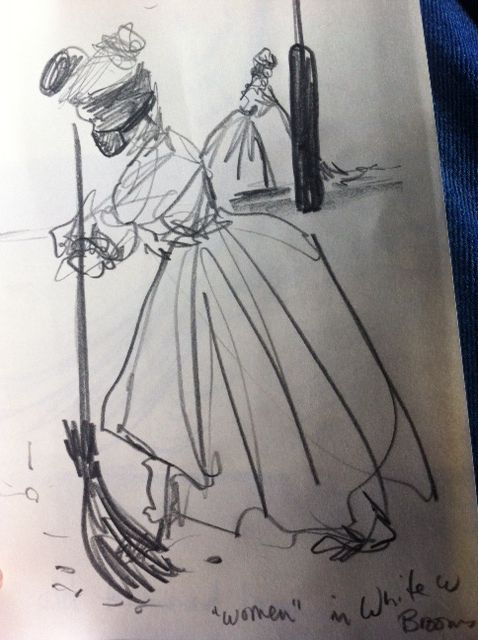
Giving herself permission.
Where is the child the child was absent, but was it present in the plant?
Do I put the child where the plant was?
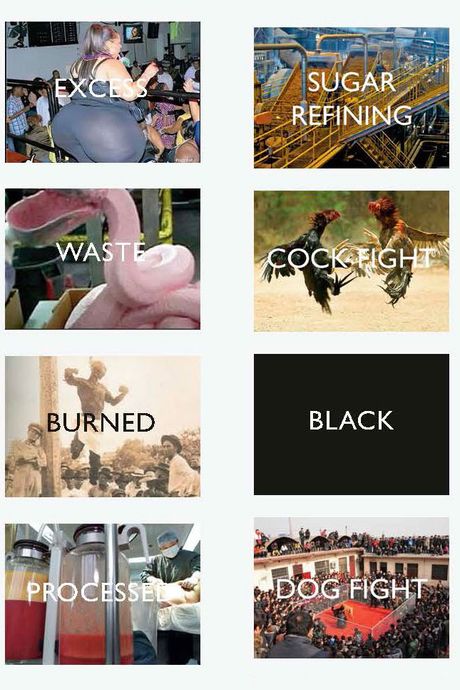
Im asking myself these questions, and then I started to do some research.
She gave me the freedom to say, I can do this.
Those miscarriages were my motherhood.
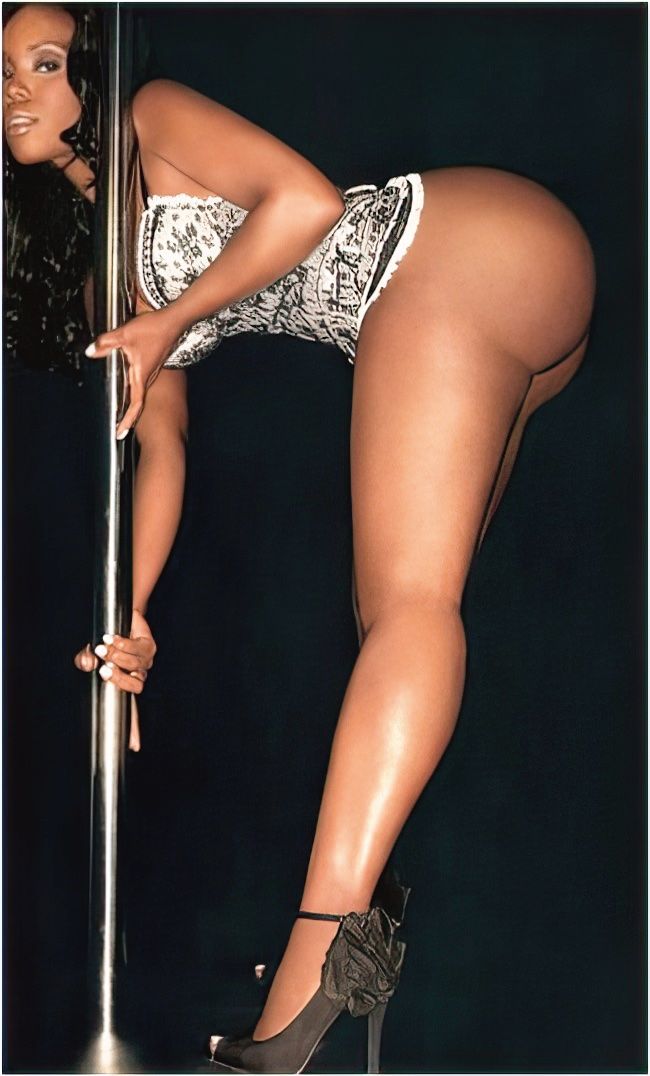
So I made this drawing.
I want to pick up the baby.
Moving the baby.
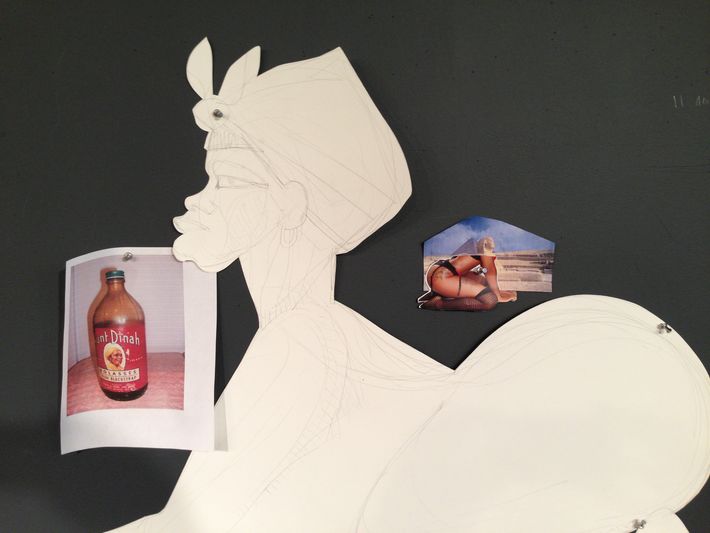
While Im talking to her, Im looking at the image.
This may be TMI, but I draw when Im ovulating because Im the most sensual.
So my time window matters with these.
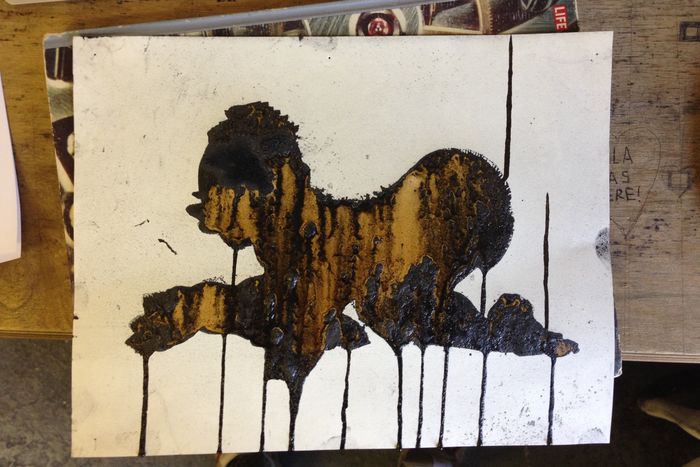
And I record the image because I think I really like this, too.
I like this echo, I like this as a misplace.
The circle is important because she sees the three miscarriages as a cycle.
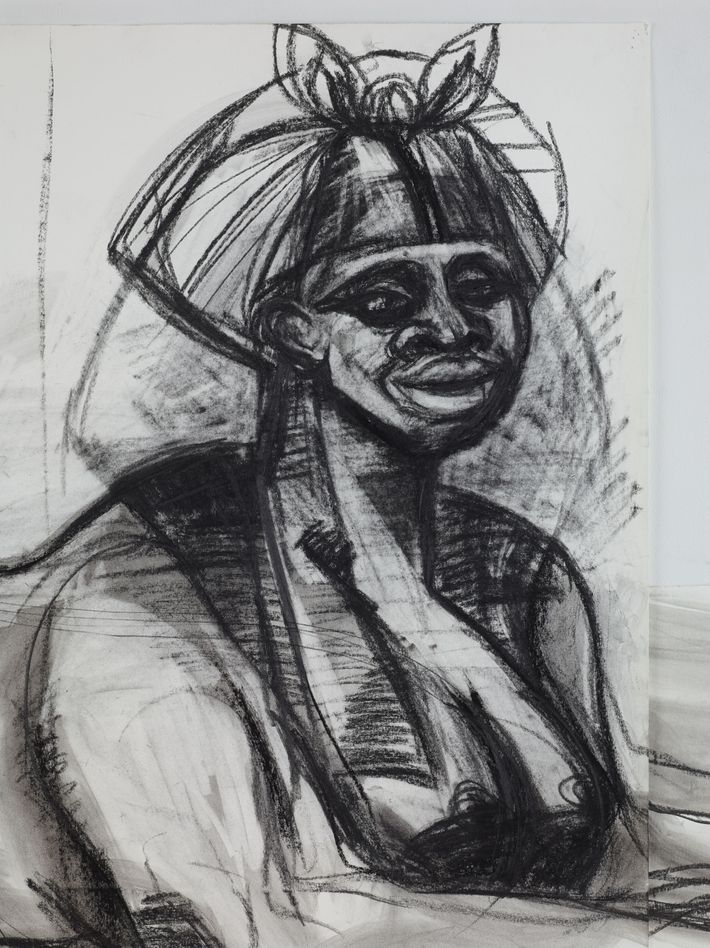
Thats why the composition is circular.
Im circling around this, I cant get out of it.
The tenuous embrace between the mother and the child was also important to her.
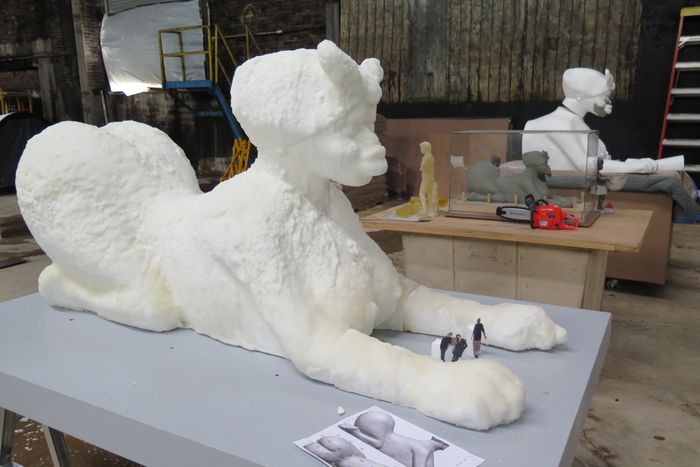
This child did disconnect from me already.
Filling it in.
Color has to start to work with composition; it controls the way I move my eye.
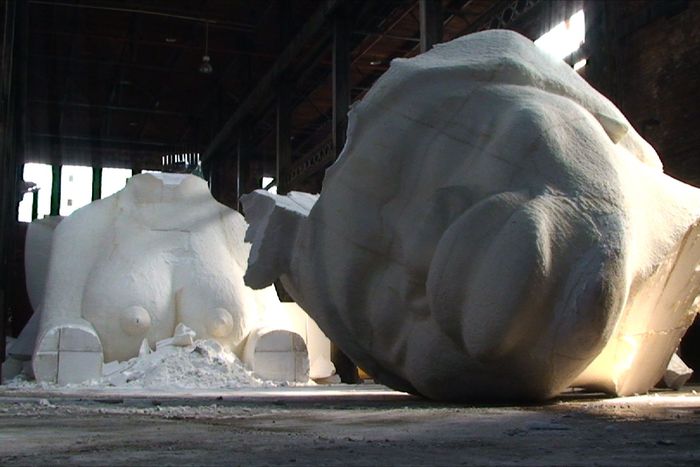
Someone asked Kerry James Marshall once, Why did you make that rug a pattern?
I think his answer was that otherwise it would be boring.
Pattern keeps the eye irritated, active.
So we stay engaged longer.
Im not following color theory; its just intuition.
She wrestled with decisions: Should I leave the floor white?
Do I want to leave her hair like this?
And especially: How much do I keep telling and not telling in this image?
Of particular worry was the skin color of the child.
Her former partner, the babys father, is Black.
Im well aware that a child is born lighter and can get darker, she said.
But she is worried that because shes white, viewers will think she doesnt know this.
I have to tell everything in this one image, she said.
Theres no room for nuance in this political climate.
Deciding on a face.
She gave both the mother and the child a face.
Everything is told here.
But it was too late.
Because then it became public.
If you were to do the picture again, youd do it without facial features on the child?
One hundred percent, she said.
That poem was Song.
Dreaming up Leo.
Adam Moss:How did this poem begin for you?
Those lines appeared to me in a dream.
Theres nothing distinguished about this sentence.
But to me, it was one of the most beautiful lines Id ever written in my life.
And of course it was altered in the final version.
AM:Do you know why?
LG:I think that it was partly theproper name.I know no one by that name.
Nobody knows who Leo Cruz is.
And if no one knows who he is, no one knows where to find him.
So there was that sense of something or someone who exists, but you cant get to him.
And obviously this is a poem written during COVID with all the terror and longing of that time.
But I didnt want to write a poem that was explicit; I wanted more of a parable.
And I saw something in those two lines about what the last year and a half has been.
The poem developed from them.
There were a lot of false leads.
So thats how it began.
And early on I got the last line.
It had to do with the kiln the fires still alive.
I was very excited about that line, too.
So then I had two pieces.
Gathering fragments.
AM:So you had the first line and you had the last line.
Did you start taking practical steps toward turning them into a poem?
LG:I dont do it like that.
And even then, once I have a draft, that sequence might change.
But the ignoring allows for a kind of haunting.
And so I was haunted by them in that period.
Because I couldnt go to the gym and I was taking long walks every day.
So strange, Jesus, what a year …
I would take my walks and I would almost hum the poem in my head.
I had worked out a different version for the opening line.
Youre looking for momentum.
The never again absolute is balanced by that is what we do not say.
As long as life continues anywhere, life continues.
Curing it of God.
In the notes, theres a line because intention is more moving than effortless splendor.
LG:Oh God, thats pretty bad.
That became the things man makes / are more beautiful / than what exists in nature.
AM:Earlier it was the things God makes.
You substituted nature for God at some point.
LG:The rhythm of the sentence remained.
But initially the sweeping statement (once it was cured of God) was the poems pronouncement.
Leo thinks was added later.
This change showed me how to do the poem as a back-and-forth.
Someone is wandering across the desert with a book of grasses, and Leo is somewhere making white bowls.
That was the last bit I figured out.
I had a lot of really bad plans.
And I had the whole poem.
But I had that clunker in the middle.
AM:But you knew its function in the poem, right?
LG:I knew that to get to do the never again, there had to be a plan.
These were all variants.
But you dont feel as though you fixed them; something in your head fixes them.
And when you get the thing right, you begin to see the shape emerge.
And the more the shape emerges, the faster you might work.
This poem was written pretty rapidly but for that recalcitrant stanza.
Finding hopefulness.
LG:Sometimes I write things down on the walks.
Its important to me not tocarry a notebook.If you carry a notebook, the walk becomes too purposeful.
I take this magical thinking very seriously.
I was taken out of high school in my senior year because I was acutely anorexic.
When I stopped starving myself, I started exercising; I walked all day, literally, every day.
Id stop in at the bakery and borrow a pen and piece of paper.
Well, I kept the paper.
Because carrying supplies seemed to me dangerous.
Now I carry a pen.
If I write something down, I write on a receipt.
When I was 18, I could count on remembering.
Now I need backup.
But I still believe the really good lines will return when they are part of something.
Theres something in your head that doesnt forget.
AM:Weeds out the bad and selects the good.
LG:Well, we like to think so.
AM:Thats a very hopeful idea itself.
LG:Well, Im actually very hopeful.
I know most of the people who read my poems think Im not.
And I like to have a good time.
No one would believe this.
Most people who have talked about this book talk about its gloom, its grimness.
But that to me is not what it is at all.
Its a survival manual: The fire is still alive.
It isnt about survival as in trudging up a slow incline hopelessly.
Its about survival as a kind of triumph, which is how I see it.
Despite everything in the dream, the fire is still alive.
But you have a book and can live in imagination.
And thats not nothing.
KaraWalkerAsked,You,WhoAreYou?
She has never made a public sculpture before.
But what to make?
Casting about.
Creative Time didnt say anything about what they were looking for.
I dont know why.
And about oil and other by-products and the overreliance we have on things that are bad for us.
Making a PowerPoint.
So I put together this PowerPoint, which confused everybody at Creative Time.
But the PowerPoint was the only sketch I approved of.
I started to think about my role as an artist in relation to doing a big public-art project.
I got interested in men like the sugar magnate Henry Osborne Havemeyer.
Those are the gods of industry.
Thats really what I have to imagine myself to be.
What to do with ruins?
We go on vacation in them.
We make them a public sort of entertainment.
Finding Sidney Mintz.
The one thing that really changed everything was Sidney Mintzs book on the history of sugar.
The sexuality of sugar was already in my head.
Plus the liquid stickiness of it just seemed really potent as a sexual symbol.
Before sugar, you got sweetness from fruit or honey.
The sugar high is a real high, like gold, like a spice worth its weight in gold.
So only the powerful had access to it.
And the quest for that particular sweetness, it generated my history, it generated the transatlantic slave trade.
Becoming the distiller.
And so the PowerPoint is what I gave Creative Time.
I said, I think Im getting closer.
And they were like, What is it, exactly?
Is it going to be a slideshow?
And I said, No, no, this isnt the piece!
I dont know how to explain the magic process maybe its not magic but something that switches.
I thought,You know, Kara, youre an artist.
The time for playing is over.
And Im feeling now I know what the material is.
I feel the material.
Its not just an intellectual pursuit.
It lives in my body.
Seeing the Sphinx.
I was on the Q train reading the Sidney Mintz book.
And that was the big moment.
From that point on, the drawings are drawn with molasses, stuck together.
We have to open it up to all these other sorts of desires that sugar exploits and represents.
And our covetousness for sugar is not unlike sexualized covetousness.
So it had to be a female, larger-than-life queen figure with everything open and bare and bare-breasted.
Becoming a sculptor.
The Sphinx was going to be the main sculpture.
And so now I had to build a sculpture, and that was terrible.
The first iteration at my studio, I was so embarrassed.
I dont know how to do sculpture.
So let me just make a table-size one of papier-mache.
And the first one collapsed.
That kind of thing can be a big setback.
I felt,I dont know how to do anything.
Who do you think you are?So then I made a smaller little clay Sphinx figure.
And I took a little snapshot with the refinery behind it.
And I had a model of the space, like a little foam-core model.
Finding the sugar boys.
I started looking stuff up, and I found these little sugar boys sculptures online candy dishes.
And I thought,These are appalling.I dont know how I found those boys.
And I thought,These are kind of strange; why are these being made?
Who buys them besides me, apparently?And then I thought these boys could be attendant figures.
Working with sugar.
I wanted them made as candy sculptures, made of sugar.
Im thinking everything is going to be made of sugar.
And basically it became, What is possible, what is not possible?
What is achievable in the time frame?
What is achievable financially?
At a certain point, everything was achievable.
We just had to say what it was.
So it was this giant sugar sculpture and these candy figurines at a human scale.
I didnt ever have the specific notion that it would melt.
That just sort of came with it.
I knew it would be an unstable object.
But we didnt really know how unstable until we started making them.
It was all trial and error because nobody had ever done it.
Dont love it, but maybe it will create the effect.
So we made as many of these sugar boys as we could.
Oh my God, that was bad.
I dont know if you remember, but some of the figures have figures inside their baskets.
Making it hers.
The building process, when that actually started, that was amazing.
Id have fits of giggles because I just couldnt believe we were doing this.
Just stepping into the space …
I dont know how to describe it really.
There were some things I literally couldnt do.
I wasnt really capable of moving giant blocks of polystyrene.
So I would go over there regularly and talk with the team that was shaping everything.
Watching the response.
On May 10, it opened.
My daughter went to see it a couple of days before.
There was the not seeing of it.
And then suddenly it was there.
And they didnt know there would be a big thing there.
They were just like, Oh my God.
And I found that very satisfying.
So my teenage daughter walked in there and I sort of pointed to it.
We were standing in front of it, just looking.
I was trying to materialize and manifest the feeling of the histories I wanted to talk about.
I had ingested that.
I had done something that affected me, and I knew what it was.
I knew the effect I wanted it to have.
And that was it.
I dont know about anything, really.
Adapted fromThe Work of Art: How Something Comes From Nothing(Penguin Press), out April 16.
Thank you for subscribing and supporting our journalism.